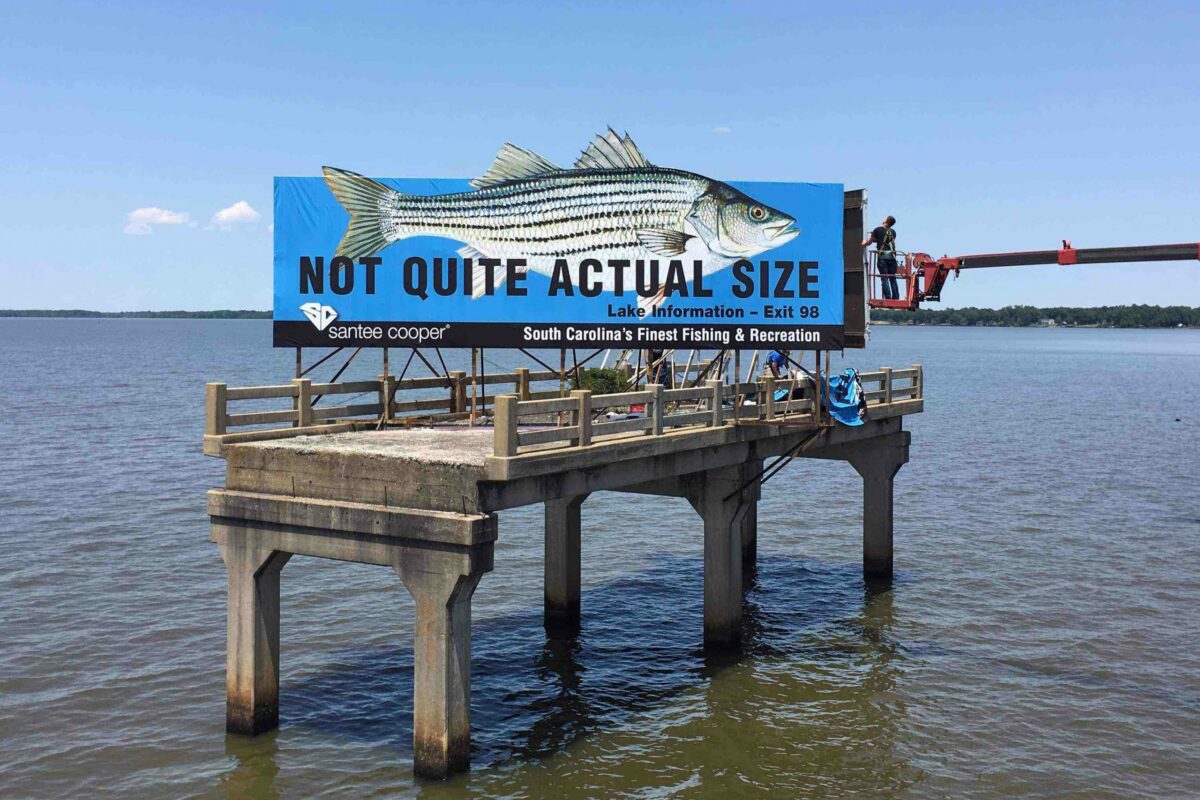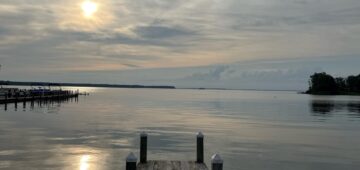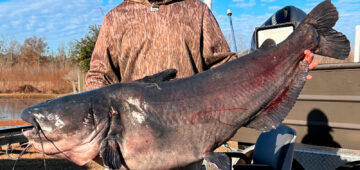Unsung Conservation Champions: Santee Cooper Country’s Mary Shriner
Santee Cooper Country Director Mary Shriner will retire this month after 35 years of promoting the outdoor travel adventures and natural resources available to visitors in the Santee Lakes region of South Carolina. Needless to say, she’s seen a few changes during that time.
by David Lucas
For 35 years, Mary Shriner has served as the director of the agency responsible for growing and supporting tourism in the region surrounding the Santee Cooper lakes. She will retire from that role at the end of June. When asked recently about the major changes or trends in tourism she’s experienced during that time, Shriner said one big change is definitely the huge increase in popularity of “non-traditional” (as they are sometimes dubbed) outdoor pursuits such as kayaking and canoeing, mountain biking, hiking or bird-watching.
“People never used to paddle. If we saw a car go by with a kayak on the roof, we’d go ‘whoa that’s unusual,’” said Shriner. “But now, it’s just everywhere, which is just wonderful. But I think that’s where the younger generation has gone – they like to get out and get those kinds of experiences. Kayak fishing is starting to get really big here.”
The popularity of paddle sports in South Carolina has grown exponentially during Mary Shriner’s 35 years at the helm of Santee Cooper Country.
Even with interest in pursuits like paddling, hiking and history-based travel growing, fishing is still the biggest draw of all on the lakes, said Shriner. “People coming to fish, that’s still our number one activity.”
But fishing on the Santee lakes hasn’t been without its own challenges and changes. When striper fishing began declining in the late 1980s, Shriner found herself navigating new territory, learning to advocate for better fisheries regulations and law changes on behalf of the lake’s fishing community and stakeholders — marinas, campgrounds, fishing guides and recreational anglers. The effort would span years and result in positive changes for the lakes’ most famous fishery.
“There’s a lot of things we’ve done to protect our natural resources that people out there have no clue that we’ve been involved in – that, that’s how the laws got changed – with us trying to help the SCDNR,” said Shriner. “Recreational fishing is critical to Santee-Cooper Country, and we’ve always tried to convince the General Assembly that we need for science to regulate instead of politics. Fortunately, I’ve had a good board, and they’ve gone to bat and convinced our legislators to listen to SCDNR — to the biologists. Because of the changes, striper fishing is huge again, and people are really excited about it.”
Closing the striped bass season during the summertime was a huge — but necessary – step, recalled Shriner. It took a concerted effort to bring the local tourism operators into that decision-making process and get them on board.
“You talk about getting people in an uproar, but that’s what was necessary, that’s what’s brought the stripers back. We had to go to the guides association, the marina and campground owners, just regular people that were pretty reluctant to do that in some cases. Lobbying their legislators to ask for help was not something that had necessarily been on their radar screens before.”
Shriner’s and Santee Cooper Country’s efforts on that front did not go unnoticed within the SCDNR, and the feeling is widespread within the agency that bringing those stakeholders to the decision-making table was critical to getting the needed regulations passed. In fact, that sustained “stakeholder input” process is now a model for how the agency approaches other major changes to game seasons and bag limits.
“Under Mary Shriner’s leadership, Santee Cooper Country has been a real champion for the fisheries of Lakes Marion and Moultrie,” said SCDNR Chief of Fisheries Ross Self. “Her leadership and willingness to partner with our agency played a critical part in the successful efforts on the Santee lakes to protect and enhance the blue catfish population, improve fish habitat in the system and, most significantly, in the on-going recovery of the world famous Santee striped bass fishery.”
Shriner and Santee Cooper Country went to bat again for anglers in 2012, helping SCDNR biologists organize a project that would eventually bring habitat enhancement projects to 18 different sites on the lakes. A key step was convincing concrete supply companies to donate broken culvert pipes to be used as fish attractors and then finding places to stage that material so it could be placed in the lake. The successful partnership project will provide diverse and long-lasting habitat that will attract loads of fish, and each site is marked with a buoy so anglers can find them.
The habitat enhancement partnership project championed by Mary Shriner will pay lasting dividends to future anglers.
“Mary is the first regional tourism director I had the opportunity to know and work with, and she has been a great partner, and will continue to be a treasured friend,” added Ross. “The positive example Mary provided for our agency laid a foundation for positive and productive relationships with other SC tourism districts as well. Mary has a lot to be proud of after her 35 years of service, including a long-lasting contribution to South Carolina’s natural resources.”
It has been an extremely successful career by any measure, but not necessarily the one Shriner envisioned for herself when she and her husband moved the family construction business to Santee from Massachusetts in 1977.
“Construction up there is very seasonal,” she said. “Once it freezes, if you don’t have a foundation already in the ground, you’re don’t have work [for the winter].” Shriner’s husband’s parents were nearing retirement, so they started in Florida and worked their way up I-95, looking for promising places to relocate. Santee was extremely appealing on that front – a small but growing rural area with a beautiful pair of lakes and an already booming outdoor tourism industry centered around golf, fishing, and the State Park. So did the couple fall in love with the area right away?
“We really did,” said Shriner. “Though you have to understand, when we first came there was really not a lot here. You had the Holiday Inn, Clarkes, and Pete Cosby’s corner store, the little Bank of Elloree bank and a handful of mom and pop hotels. Smith’s, of course, and that was pretty much it. . . so we had a front row seat to just watch the area grow and prosper.”
Another thing there wasn’t, was much of a way for Shriner to use her college degree in fine art. But rolling up her sleeves and working hard at whatever is in front of her is Mary Shriner’s way, and that’s what she did in 1977 – taking jobs at various hotels as a bartender, maid, pro shop attendant, desk clerk and whatever else needed doing, and raising a family, while her husband concentrated on building the family construction business.
Those early firsthand experiences on the front lines of the tourism industry would prove invaluable in her later career. Eventually, that work evolved into jobs as a marketing specialist for local hotels, which mainly involved setting up packages for golfing trips, said Shriner. Corporate retreats, sales meetings and that sort of thing.
“I had no background in marketing at all,” said Shriner. It was something she learned by doing — hands-on. “I just kind of fell into it, honestly. You know [laughing] if you can talk….if you can sling a line, you can do marketing.”
In May of 1985, Shriner took on the job of Assistant Director at the Santee Cooper Country Promotion Commission – better known as simply “Santee Cooper Country.” Within six months, she had been named Director and has been responsible for regional tourism marketing in the five counties surrounding lakes Marion and Moultrie ever since. It was a whole new challenge. “It just fell right into place,” she said.
While many things about the tourism promotion business have changed through the decades – particularly with the advent of the Internet and social media, Shriner still relies on that hands-on approach that she learned on the front lines.
“I’m kind of a dinosaur. I still kind of do stuff the old-fashioned way. Whoever comes in after me, you know that’s going to be a direction they are going to have to go in [more emphasis on social media and online marketing], but most younger people in this business they know that stuff well. They’ve grown up with it.”
But Shriner’s “old-fashioned” methods still form the backbone of a successful support organizations for local businesses, small and large.
“Look at a fishing guide who’s just getting started, for instance,” she said. “He – or she – doesn’t necessarily know what they need or what direction to go in for successful marketing. First thing, we’ll sit down with them and help them design a rack card, so they’ve got something to hand out to start promoting themselves.
“You know, when the drought and hydrilla was so bad, the mom and pop places were in a really tough spot. So we just had to keep being a cheerleader and keep getting out there and telling people — were still open for business, there are still things you can come and do. A lot of it really boils down to relationships – keeping personal contact with the people and businesses in your region.”
Through the years some aspects of what visitors to the region are seeking have changed, but others have stayed exactly the same.
“I’d say it’s evolved. People are still coming here for fishing, for golf, and for the great outdoors, of course, but they might be a looking for a little more now, in terms of accommodations. Back in the old days, a lot of the marinas were …..it was just a very male-centric environment….I’d go to a travel show and meet men — it was all men back then — and I’d tell them, this fish camp or that one is really great, for you and your buddies, but I don’t think your wife would really be crazy about it [laughs].Over the years, that’s changed a lot. Places have learned to cater more to couples and people with children.”
Shriner said she’s looking forward to enjoying retirement and spending more time with family, but if there’s one project that she’d like to see finished before hanging up her Santee Cooper Country hat for good, it would be the reopening of the old Highway 301 Bridge.
Closed prior to the solar eclipse in 2017 due to safety concerns, before that the old bridge served as a fishing pier and a vital connection for the Mountains-to-Sea-spanning Palmetto Trail. It will take raising between $1.5 to $3 million to get the job done, Shriner estimates, and it’s a goal she’ll keep working toward for as long as it takes.
“That is my dream, I really want this to happen,” she said. June 30th will be Mary Shriner’s last official day on the job, but it may not be the end of her involvement with this community and this industry. “I know it’s time to let someone else take the baton, but I’ve got a phone, and I hope they’ll call me when it’s time to cut the ribbon on that bridge.”
Something tells me they will.






